
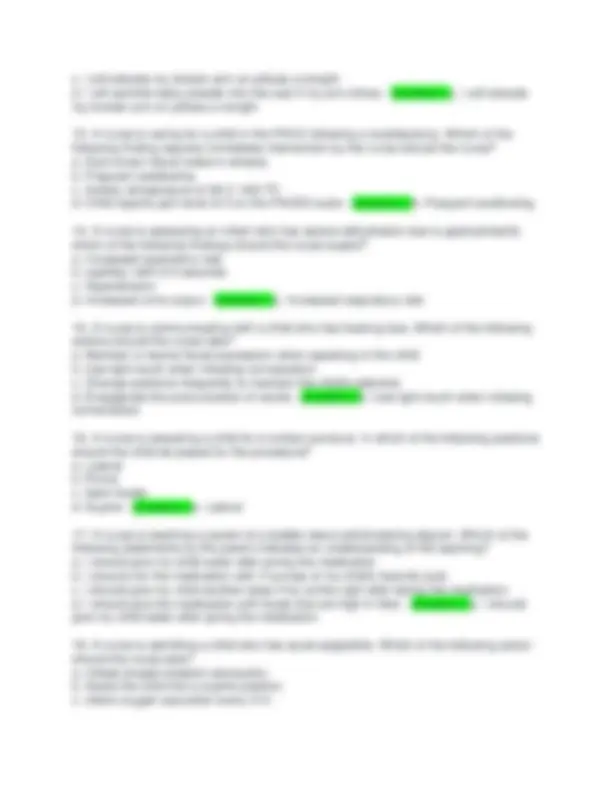
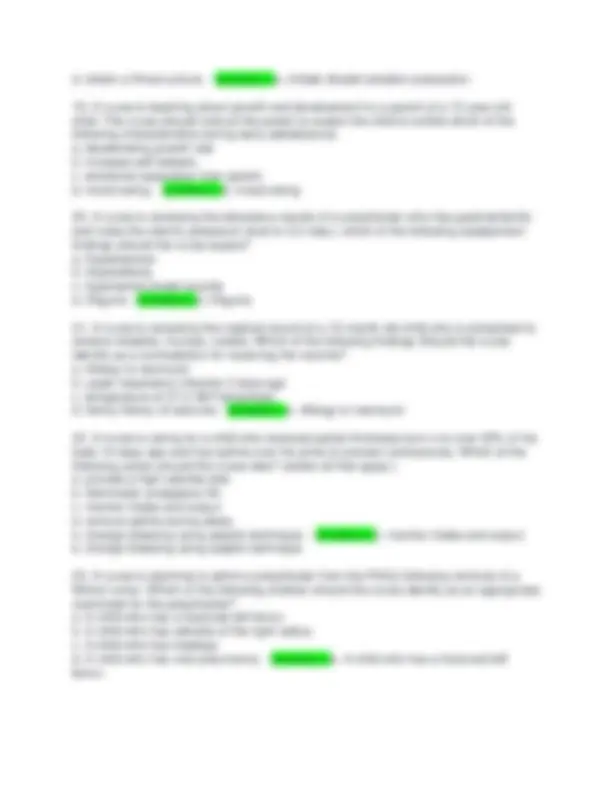
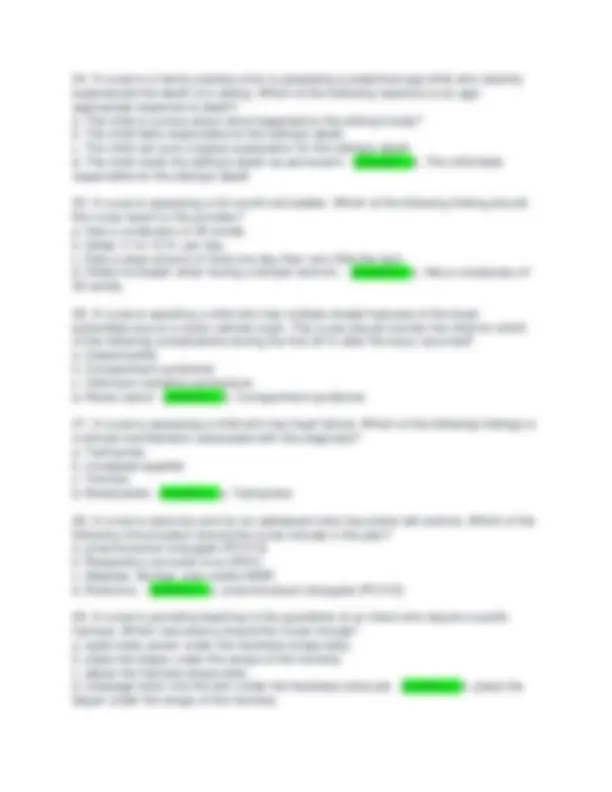
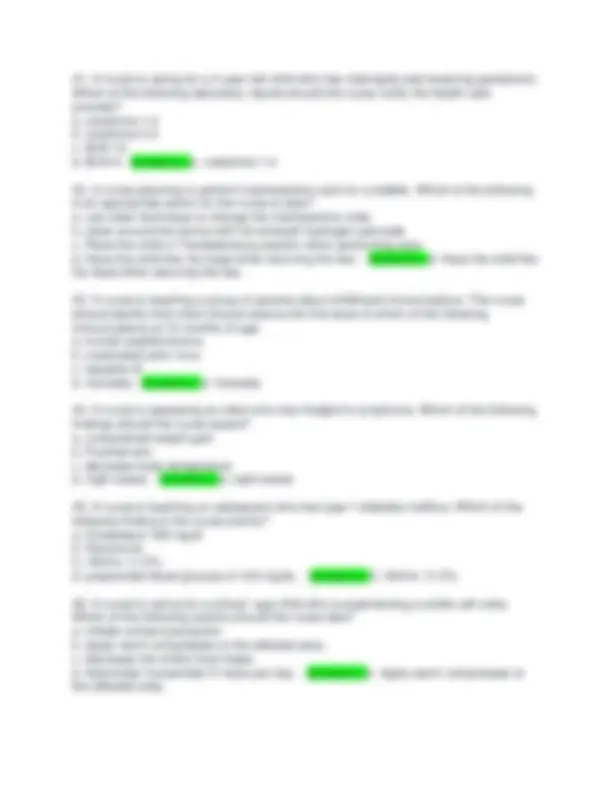
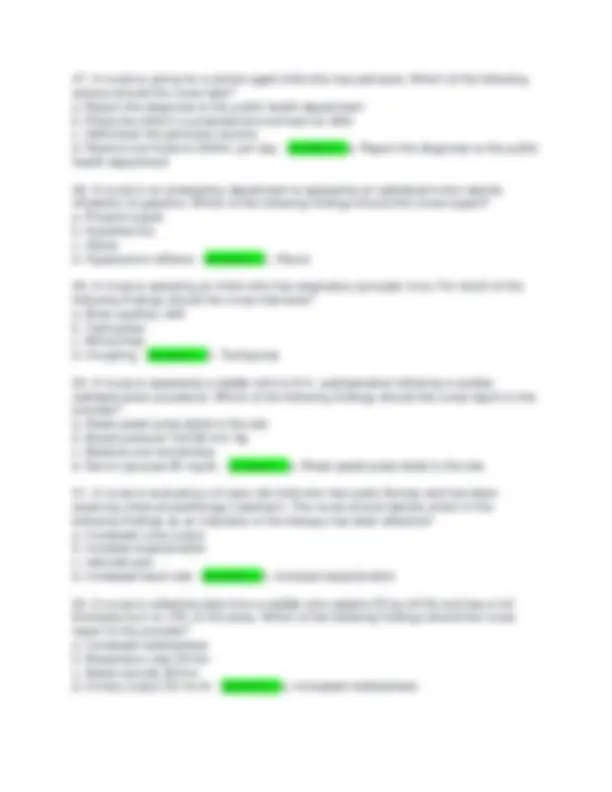
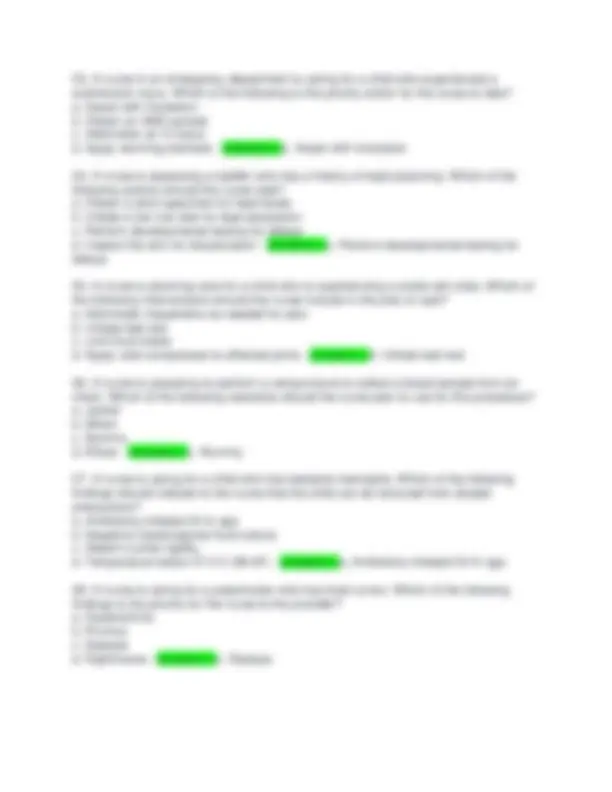
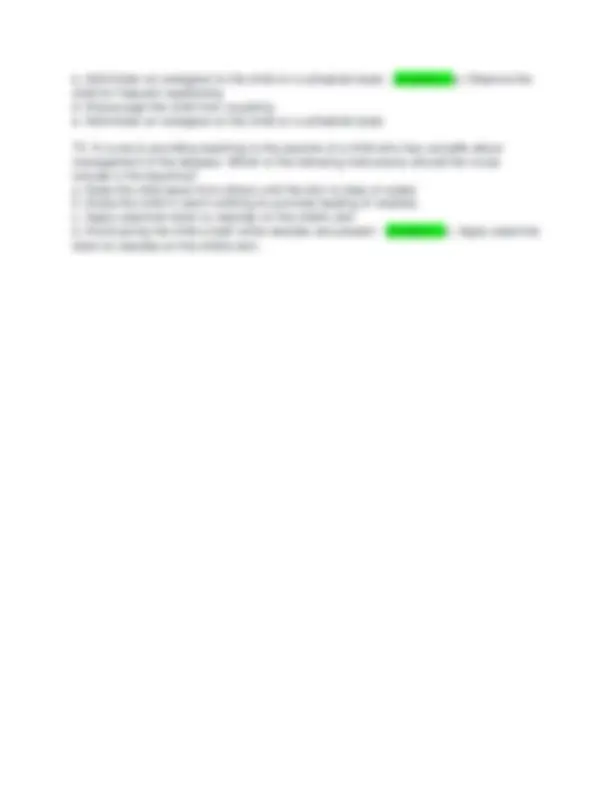


Study with the several resources on Docsity

Earn points by helping other students or get them with a premium plan


Prepare for your exams
Study with the several resources on Docsity

Earn points to download
Earn points by helping other students or get them with a premium plan
Community
Ask the community for help and clear up your study doubts
Discover the best universities in your country according to Docsity users
Free resources
Download our free guides on studying techniques, anxiety management strategies, and thesis advice from Docsity tutors
A valuable resource for nursing students preparing for exams. it features a series of multiple-choice questions covering various aspects of pediatric nursing, including medication administration, assessment, and care planning for common childhood illnesses and conditions. the questions test knowledge of appropriate nursing interventions, safety protocols, and understanding of child development. each question includes the correct answer, allowing for self-assessment and learning.
Typology: Exams
1 / 13

This page cannot be seen from the preview
Don't miss anything!








d. Encourage the adolescent to perform incentive spirometry to maintain lung capacity - answers>>d. Encourage the adolescent to perform incentive spirometry to maintain lung capacity
d. obtain a throat culture. - answers>>a. initiate droplet isolation precaution.
b. Avoid foods containing milk products c. Increase the toddlers protein consumption d. Limit foods high in iron - answers>>b. Avoid foods containing milk products
e. Administer an analgesic to the child on a schedule basis - answers>>a. Observe the child for frequent swallowing d. Discourage the child from coughing e. Administer an analgesic to the child on a schedule basis